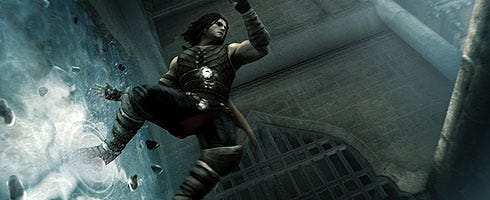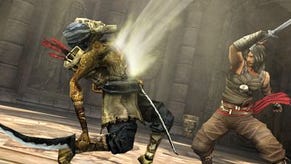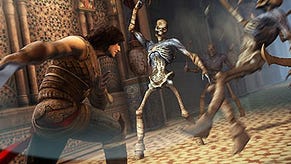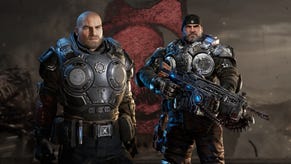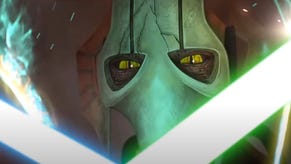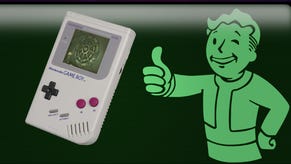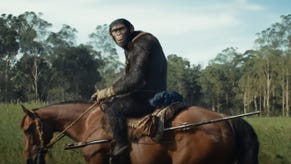Interview - Prince of Persia: The Forgotten Sands' Thomas Simon
Ubisoft delighted many by announcing a return to the Sands of Time storyline with its imminent Prince of Persia release The Forgotten Sands, moving back from the IP's 2008 reboot to a time-line concluded in 2005 with The Two Thrones.
Prince of Persia's "never die" buddy system in 2008 was roundly criticised for making the game too easy, but despite moving back to a harder core, Forgotten Sands has stepped outside of the property's norm again with mass combat and a movie tie-in, sitting alongside the May release of Disney's film adaptation, Prince of Persia: The Sands of Time, starring Jake Gyllenhaal.
So, with Ubisoft playing real "sands of time" games with the franchise, is all well with the Prince? We chatted to lead game designer Thomas Simon to find out.
Interview by Nathan Grayson.
You took a pretty large step off the beaten path with 2008’s Prince of Persia. What lessons did you learn while developing that game, and how are you incorporating them into The Forgotten Sands?
Thomas Simon: I personally didn’t work on Prince of Persia 2008. For any game, I think it mainly boils down to experience everyone gained while working on a project. This is true for any medium; you try things and sometimes they work and sometimes they don’t. But what matters is the experience learned and how you apply it on future projects.
Prince of Persia’s platforming has always been sublime, but some would argue that combat’s narrowly missed the mark each go-around. So you’ve returned to the combat system seen in Sands of Time, but obviously you’ve re-tooled it a fair bit. How much of a focus has combat been for you this time around?
Thomas Simon: In Forgotten Sands, we wanted the different types of gameplay to blend seamlessly as we didn't want sequential gameplay components. This means that players will often have to deal with platforming and combat at the same time. Also, in Forgotten Sands the combat system brings new features that pushes the experience further and always keeps it fresh. It ramps up from simple groups of soldiers to massive battles mixing several types of enemies and requires players to call on different abilities.
On that note, what made you decide to switch from the one-on-one focus of Prince of Persia’s combat to the larger, up-to-50-man melee in The Forgotten Sands?
Thomas Simon: Combat in Forgotten Sands was developed around the Prince’s two greatest strengths: his legendary agility and his superior swordplay. First, combat is developed around the Prince’s manoeuvrability; we tried to convey through gameplay the contrasts between the Prince’s speed and acrobatic talent and a powerful mob of enemies.
The “crowd control” system takes full advantage of this concept and was a natural evolution that, basically, imposed itself early in development. Because of the sheer number of enemies on screen, there is no way the Prince can block and counter dozens of weapons. This means the Prince must always be on the move and use the environments to limit the number of opponents he faces. On the other hand, if you fail to control the crowd, you will progressively witness the Prince’s mobility being reduced as he’s encircled and finally being overwhelmed by the mob’s brute force.
The five-hit combo system is based on the Prince’s devastating swordplay. Each of the five strikes can be quick, or can be charged to perform a stronger slash and each new strike is more powerful that then previous one. Teamed with good timing, players have at their disposal a deadly technique to dispatch multiple enemies. However, players must be wary since the time it takes to charge leaves them open to attacks.
You’ve said that The Forgotten Sands has been in development since before you wrapped up work on 2008’s Prince of Persia reboot. Why? What made you decide to immediately leap back into the Sands of Time storyline before launching a new version of the franchise?
Thomas Simon: Returning to the Sands of Time trilogy was a natural step for Ubisoft Montreal and we felt we were not finished telling stories in this universe. From the onset, our ambition was to create an epic experience that could only be hinted at in Sands of Time. And this is the philosophy that guided our every step when developing Forgotten Sands.
Lately, the question of how game developers should handle death and player failure has become a hot-button topic. You’ve experimented quite a lot in that field with The Forgotten Sands’ ability to rewind time and Prince of Persia’s introduction of Elika, who essentially eliminated the prospect of “death” altogether. With that said, how do you think death should function in games? How should the player be “punished” for failure – if at all?
Thomas Simon: This is only my personal opinion, but while it may seem to be a paradox, I think players want to be able to die. This basically means that players must be aware that failure has a price, or else they might have little motivation to succeed.
Yet, as developers we must balance that risk. For me this is critical in error management: finding the right balance and ensuring the game is never needlessly frustrating. The Prince’s time rewind ability is a remarkable way of empowering players and letting them manage their error but is not the only tool we use. A smooth learning curve is probably the greatest asset we have at our disposal but also an extremely tough one to “nail”. This is why we do extensive playtesting to research and, hopefully, confirm our ideas. It is a tool that gives us information that is extremely useful when developing a game and has been used extensively in the Prince of Persia series, back in the Sands of Time days.
In a similar vein, what are your thoughts on difficulty in games like Prince of Persia? 2008’s Prince of Persia sacrificed a lot of difficulty in favor of maintaining a beautiful, almost poetic flow in its platforming. Which I, personally, liked quite a lot. But obviously, reactions overall were mixed. Where do your priorities lie, and where do you see videogame difficulty going? Is it all about the challenge, or is it better to prioritize immersive “experiences” over difficulty?
Thomas Simon: I truly believe we can (and must) achieve both. It’s a question of picking the right moment. In games like the Prince of Persia series, there are phases where you need a little break and where the gameplay pressure should drop. This is the right moment for a bit of immersive magic or for fluid platforming. This kind of more relaxed sequence is what we need to prepare the player for very intense platforming or combat. This technique is often used in other mediums (such as movies or books) where a lighter scene often precedes an intense one, as to maximise impact of the latter. In the end it comes down to how we want to control the player’s experience throughout the whole game and how we make sure it is never flat. I think games should not forget that players need to develop their skills to be willing to continue playing. But they also need to be offered an immersive experience and a complete game universe to explore. I don’t think either of the two can be enough by itself any more.
Is there any chance you’ll ever return to the setting of 2008’s Prince of Persia? Or have you closed the book on that Prince’s story?
Thomas Simon: I am currently fully committed on Forgotten Sands and I do not know what the future holds for the Prince of Persia game released in 2008.
From what you’ve seen of the Prince of Persia movie, do you think – especially considering its acting, directorial pedigree, and apparent adherence to the game’s plot – that this could be the best videogame movie yet? Or rather, the one that shows everyone else how it’s done?
Thomas Simon: I do not know anything more about the movie than you since I have only watched the trailers publicly released. As such, I will hold my opinion until I watch the movie.
